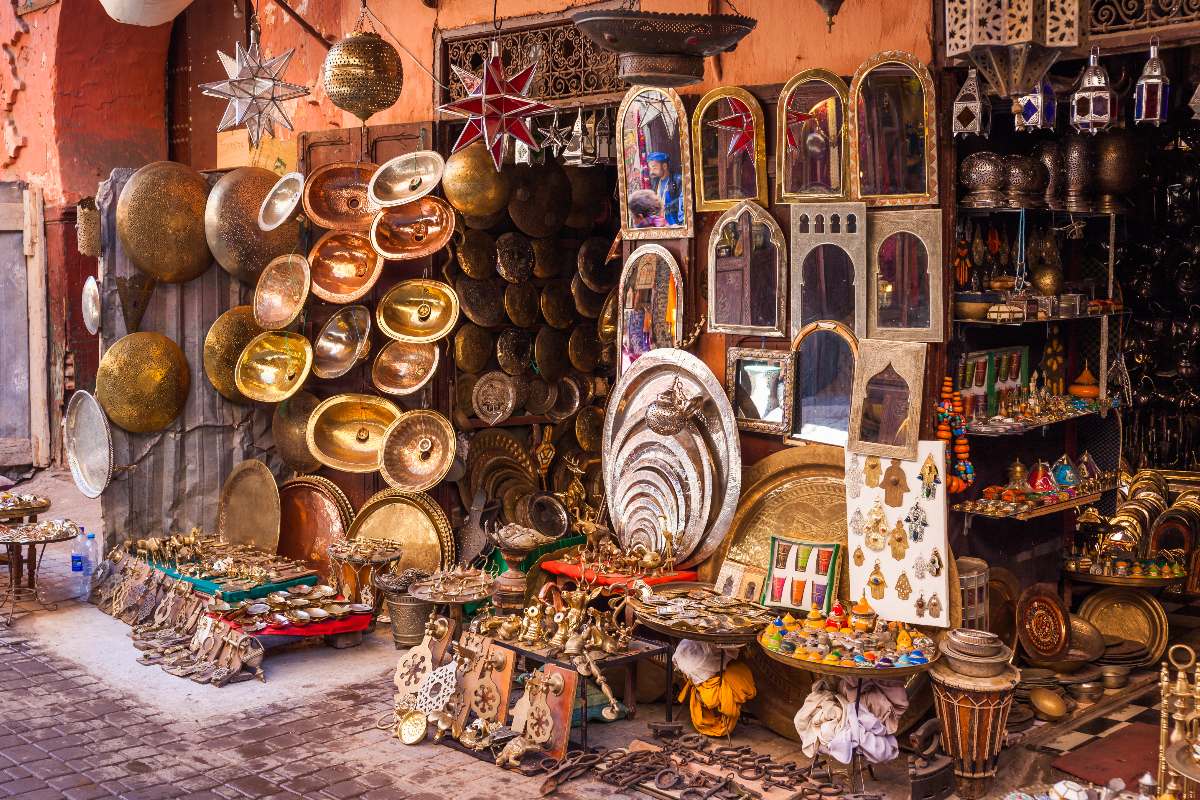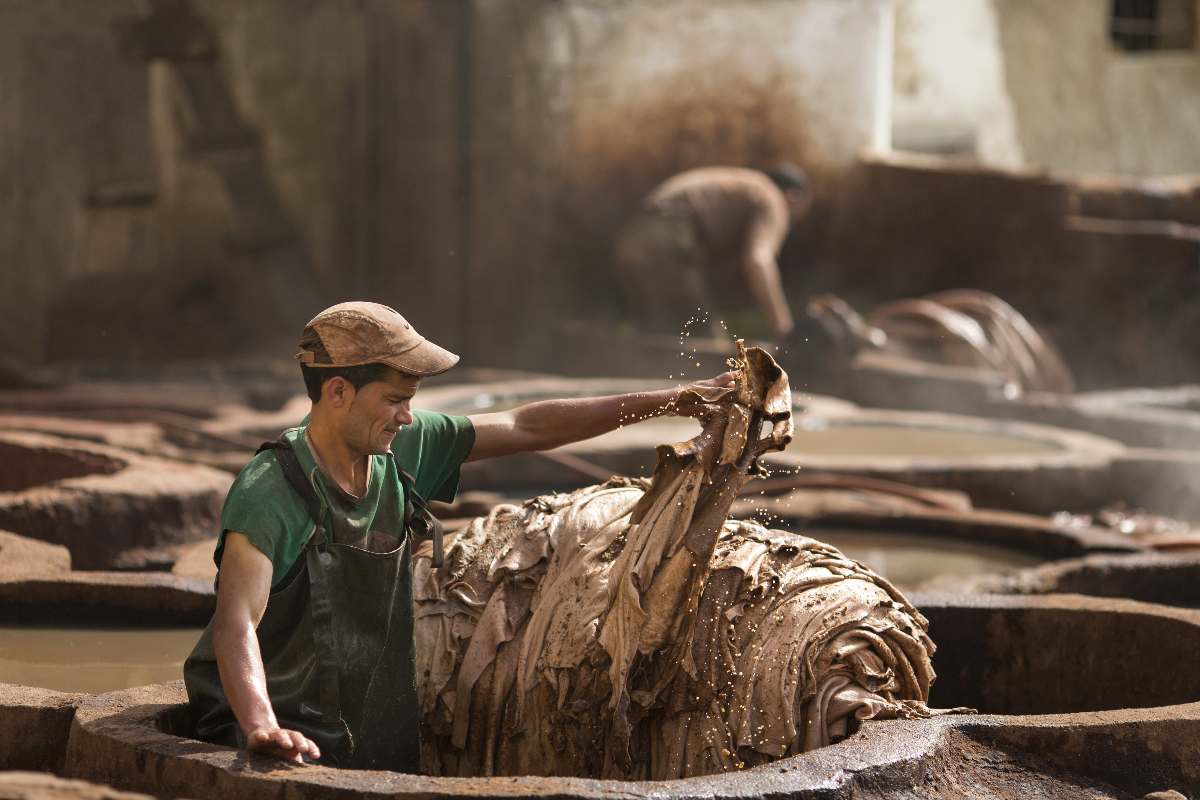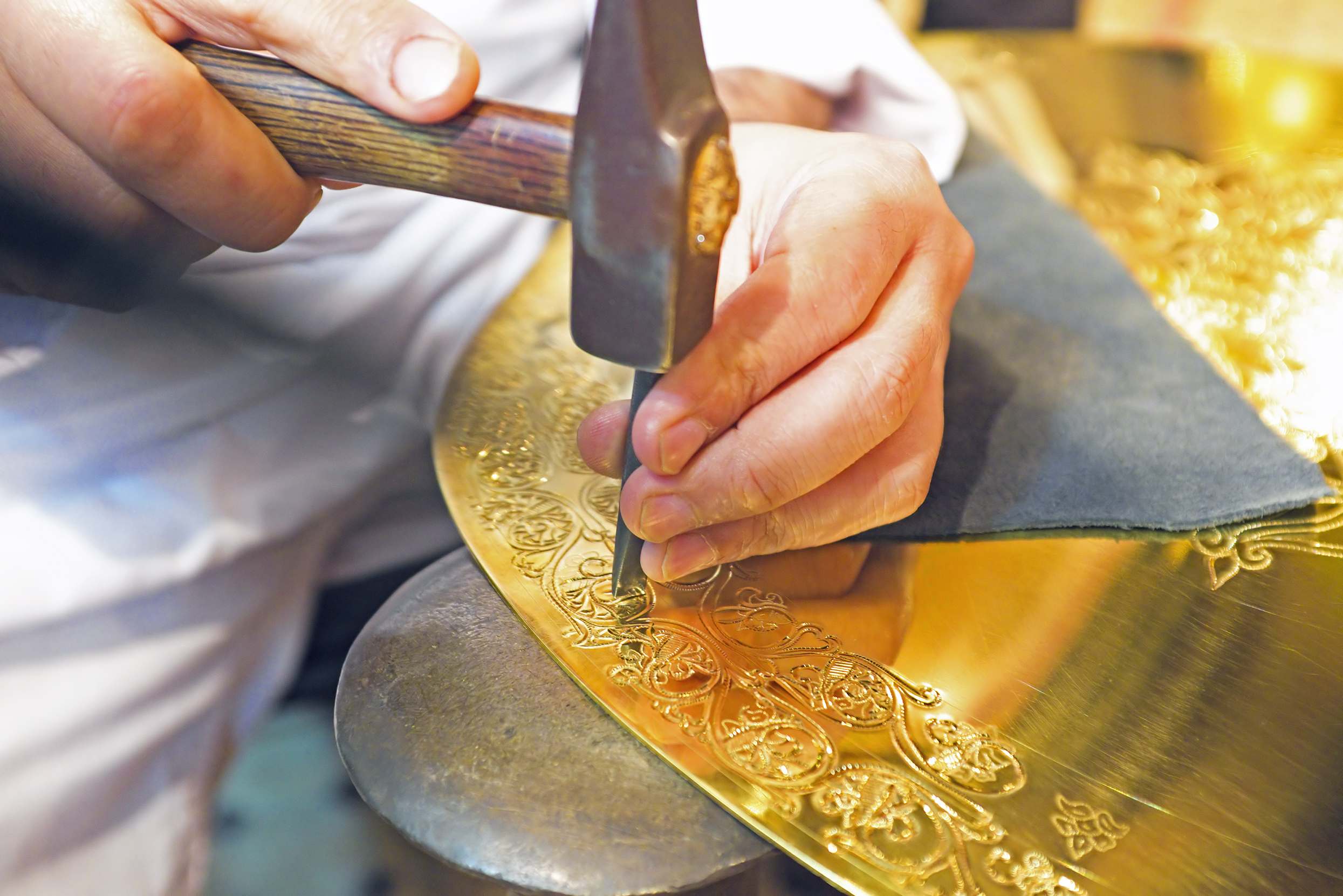Craftsmanship is often interpreted as a ‘minor art’, since its works are intended for the decoration of architecture, but do not have an end in themselves. However, this conception responds to a Western vision. On the other hand, Moroccan craftsmanship can be considered an art form, with levels of refinement and quality that are difficult to match in other countries.
A particularly interesting aspect of Moroccan handicrafts is that they are still very much alive today. That is to say: there are still many people who are dedicated to this activity, which has experienced a new impulse thanks to tourism, since the objects on sale in traditional shops are a great souvenir of travel for those who buy them.
But apart from that, Moroccans themselves are still very attached to the objects ‘of a lifetime’, because in some cases they are absolutely necessary for everyday life. Therefore, on this page we tell you everything you need to know about Moroccan handicrafts: what types there are and where you can find them.
To find good handicrafts in Morocco you will have no problems: in all tourist destinations there are souks and stores where handmade products are sold in this country. The medinas are always the epicenter for this: their pedestrian alleys are perfect for this type of stores which, in some cases, also house a small workshop where items are produced for sale. In the larger medinas, it is possible to find neighborhoods grouped by guilds according to their activity and specialization: tanners, jewelers, etc. But even in the medinas of the smallest villages you will find stores selling this type of products.
The ‘capital’ of handicrafts in Morocco is Fez, due to the very high quality of the craftsmen in some specialties, such as ceramics or wood. Other cities, whether large or medium-sized, also enjoy great prestige, such as Marrakech or Safi. For its part, in the rural world you will find less refined items, but equally authentic, because they are made by the humble local people, with the resources they have at hand.
Special mention should be made of the museumsGiven the non-existence of Western-style art, the main museums in the country focus on local crafts and the customs of the society where the building is located. In other words, they are historical but also ethnographic in nature. This is the case of the Museum of Marrakech or the Nejjarine Museum in Fez, as well as other examples located throughout the country.

Moroccan handicrafts are not only characterized by their quality, but also by their variety. Here are some of the most common typologies in the country’s souks, with some examples of pieces of interest and relevant production centers.
Textiles may be the first items you discover upon entering a medina: the sellers of these items often insistently invite visitors to enter their store to admire and buy these masterpieces. At that time you will discover the different types of textile products that exist in the country.
Of course, the carpetwhich is practically a ‘staple’ product, to provide comfort at the moment of prayer, since this is done kneeling on the floor. In addition, it is a very useful element in the desert, where they are used to cover floors to avoid contact with sand and dust. In mountain areas, such as in the Atlas or the Rif, they are also an excellent insulator for cold soils. For these works, animal raw materials are usually used, such as merino wool or goat or camel hair. They are a hallmark in mountain areas, such as in Chaouen (Rif) or in Marmucha, Zaïane, Chichaouna and Beni Ouarain (Atlas).
But the quality and skill of Moroccan textile masters can be seen in many other objects. For example, for the clothing and accessoriessuch as caftans or hijab. Also widely disseminated is the upholsteryto embellish and give comfort to chairs or furniture. Some of the highest quality fabrics are made of silk or linen, with decorations that often use gold threads and striking colors. Fez, Meknès and Rabat-Salé are among the most important production centers.

Ceramics is one of Morocco’s main handicrafts. It uses clay and other ceramic materials that are abundant in the country’s territory. Its use is fully established in the most distinguished environments, such as mosques and palatial residences, but it is also part of the most humble and rural environments in Morocco.
A very widespread version is the tile in the form of flat pieces that are used to cover walls, floors and even furniture, in order to decorate spaces. Glazed ceramics provide additional luster, elegance and durability, while in rural areas, the choice is simply to paint over the surface.
But also very important are the practical objects made with a potter’s wheel (pottery). with a potter’s wheel (pottery) which, although they have a simpler and more modest finish, are very genuine. This is the case of vases, trays or the classic tajine lids.
It is obligatory to mention Fez as a great city of reference, with the blue as a true sign of identity. Safi is another pole for Moroccan ceramics, in this case with a greater chromatic variety. Meknes, Rabat, Marrakech and Azemmour are other places famous for their ceramics.

Fur is another craft discipline that you will see everywhere. It is not for nothing that the word leather goods is used in different countries to refer to leather work in general, especially when it comes to fashion accessories. And it is no coincidence that this is the case, as Morocco has had a long tradition of livestock farming for centuries, even in the most arid areas of the desert, which encouraged transhumance and nomadism.
In addition, it is a perfect craft for tourists, since it is very easy and practical to buy this type of articles: backpacks, bags, purses, wallets, wallets, covers for cushions and poufs, belts… It is also possible to find or request custom-made articles of the most varied, such as book covers, horse saddles and a long etcetera.
Here, again, we have to mention Fez, where the historic tannery district (Chouwara) is still preserved. Tetouan, Rabat and Marrakech also enjoy first class tanners, which give prestige to these destinations.
Moroccan cabinetmakers are also first-rate craftsmen. Their products are much more difficult to transport as travel souvenirs, given their large dimensions. However, they can be made to order and can be sent by international parcel service. Some of the most popular items are the chestsoften lined with leather, metal or textile materials. The furniture are other masterpieces of local cabinetmaking, such as sideboards or chairs. And for those who simply wish to admire this craftsmanship in situ, there is nothing better than delighting in columns, doors, lattices and beams in historic buildings.
Among the most iconic woods is the Atlas cedar, a national tree whose exploitation was very popular in the past, especially in those areas where it is most abundant, such as the Rif or the Atlas. Walnut, acacia and lemon tree are other woods widely used, while thuja is an interesting and handy resource in the Essaouira area.

Jewelry is undoubtedly the craft most associated with luxury and exclusivity, a ‘heritage’ of Jewish artisans, when this community had a large presence in the country. But in order to make the right choice you need to have a good eye when selecting the piece, since not all metal items have a premium character.
It is in urban environments where it will be easier to find high quality and maximum refinement, which can be seen in the techniques employed and the materials used. In some cases, gold or silver threads are inlaid as a filigree, in others it is jewelry set with inlaid coral or precious stones, sometimes enameled works that give a special shine…
This type of technique can be seen in all types of jewelry, including earrings, bracelets, bracelets, necklaces, pendants … and a long etcetera. But they are not only applied to jewelry as a fashion accessory, but also complement other objects such as furniture or weapons, with a sense of honor.
The most prestigious cities in the field of jewelry usually coincide with those where the Jewish population was important, such as Fez, Essaouira or Rabat. On the other hand, the goldsmith articles from rural areas have much more humble pretensions, not only because of the less meticulous finish but also because of the modesty of the materials used.
In addition, there are many other metal works designed for everyday life, with materials that do not reach the ‘level’ to be part of jewelry. This is the case of iron, zinc, copper or brass. But they are used to make very popular objects, such as tea jars or lamps. In some cases, inlaying precious stones or soldering gold and silver threads enhances its elegance and value.
Finally, basketry is not exactly considered a luxury craft. But lovers of handmade objects will appreciate its originality and authenticity. The raw material used in these works is vegetable fiber, which can be reed, cane or palm, among other plants. With them, it seeks to bring everyday beauty in humble homes, and nowadays it has gained a lot of attention for its natural and sustainable character. In the Rif Mountains or in the city of Salé you will find interesting examples, although these works are widespread throughout the country.
Fill out the form below to receive a free, no-obligation, tailor-made quote from an agency specialized in Morocco.
Travel agency and DMC specialized in private and tailor-made trips to Morocco.
Mandala Tours, S.L, NIF: B51037471
License: C.I.AN-187782-3